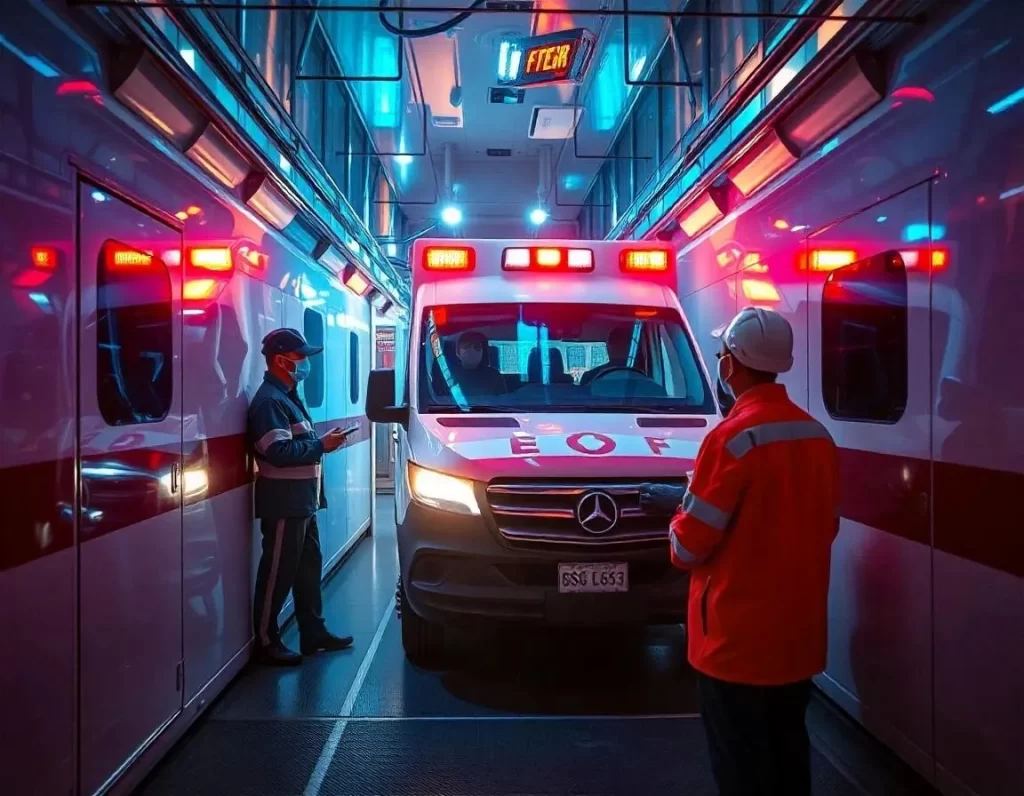What to Do if You Need Emergency Medical Transport and You Don’t Have Insurance?
Emergency medical transport can be a lifeline in a crisis, but the cost can be a crippling blow, especially without insurance. In 2022 alone, a staggering 20 million people relied on these services to access urgent medical care. Whether by ambulance or airlift, these services are essential when time is of the essence. However, for those without health insurance, the financial burden of emergency transport can quickly escalate.
In this post, we’ll answer common questions that arise when you need emergency medical transport but don’t have insurance. From understanding how much it may cost to exploring options for financial assistance and payment plans, we’ll provide the key information you need to navigate this situation. Let’s answer some questions!
Can I Get Emergency Medical Transport Without Insurance?
Many people believe that emergency ambulance service is only available to those with insurance, but that’s not the case. In most countries, emergency services must provide care, regardless of your ability to pay or your insurance status. In the United States, for example, the Emergency Medical Treatment and Labor Act (EMTALA) ensures that hospitals and ambulance services must stabilize and treat individuals in an emergency, even if they are uninsured or underinsured.
However, while emergency transport is provided, it’s important to understand that you will still be billed for the service. Ambulance costs can range from hundreds to thousands of dollars, depending on factors such as the distance traveled and the level of care required. Without insurance, these charges can be overwhelming, but knowing your rights and exploring payment plans or financial assistance can help manage the financial burden.

How Much Does Emergency Medical Transport Cost Without Insurance?
The cost of emergency medical transport without insurance can be significant and varies depending on several factors and the different types of transport.
Ambulance Costs:
For ground ambulance services, the cost typically ranges from $400 to $1,200 or more. The exact price depends on several factors, including:
- Distance traveled: Longer trips generally cost more.
- Location: Urban areas may have lower fees, while rural areas can increase costs due to travel time and accessibility.
- Level of care required: Basic Life Support (BLS) services are less expensive than Advanced Life Support (ALS), which involves more specialized medical care.
Air Ambulance Costs:
If you require an air ambulance for transport, expect much higher costs. These services can range from $10,000 to $40,000 or more, depending on:
- Distance flown: Longer distances increase costs significantly.
- Type of aircraft: Larger or specialized planes with more advanced medical equipment can be more expensive.
- Medical needs: The higher the level of medical care needed during the flight, the more expensive the service becomes.
Factors Affecting the Cost:
The overall cost of emergency transport can be influenced by several additional factors:
- Geographical location: Emergency services in urban centers may be less expensive than those in remote or rural areas.
- Service type: Basic Life Support (BLS) is cheaper than Advanced Life Support (ALS), which requires more intensive medical staff and equipment.
- Insurance network status: If the ambulance service or hospital is out-of-network for any potential insurance you might have, the costs will be higher.
Are There Any Financial Assistance Programs for Emergency Medical Transport?
While the costs of emergency ambulance services can be overwhelming, several financial assistance programs may help reduce or cover the expenses for uninsured individuals. Here are some options to explore:
1. Community Resources
Local health departments, non-profit organizations, and social services may offer resources to help cover emergency transport costs. Many communities have programs that assist low-income residents with medical bills, including transportation. It’s worth reaching out to local community organizations, churches, or social service agencies that may offer grants or emergency funds for medical emergencies.
2. Charity Care Programs
Some hospitals, ambulance companies, and medical providers offer charity care programs for uninsured or low-income patients. These programs may include sliding scale fees, where the cost of transport is adjusted based on your income and ability to pay. Many hospitals have financial assistance departments where you can apply for aid or negotiate reduced rates for emergency medical services.
3. Medicaid/State Assistance
If you are eligible for Medicaid or other state-based assistance programs, you may qualify for coverage of emergency medical transportation insurance. Medicaid often covers ambulance services, especially for low-income individuals or those with disabilities, provided certain conditions are met. Eligibility and coverage rules vary by state, so it’s important to contact your state’s Medicaid office to see if you qualify for assistance.
4. Emergency Fund Programs
There are both national and local programs that provide emergency funds specifically for urgent medical transport needs. For instance, some organizations offer Emergency Medical Assistance Funds designed to help individuals in urgent situations who cannot afford the transport costs. These funds can often be accessed through local non-profits, faith-based organizations, or even through state-level disaster relief programs.
Need urgent and affordable medical transcription? Schedule a service to ensure quick and accurate results for your emergency needs.
Book Now!Is it Possible to Get Emergency Medical Transportation without Paying Upfront?
Yes, it is possible to receive emergency transport without paying upfront, though it depends on the provider and your specific situation. While many ambulance services and hospitals may require payment at the time of service, some may allow you to pay later or work with you to establish a payment plan. Here are a few key points to consider:
- Some ambulance providers or medical transport companies may bill you after the service, especially if you don’t have insurance or are unable to pay immediately.
- If you can’t afford to pay the full amount at once, many providers are open to setting up payment plans. These plans allow you to break the cost of the transport into smaller, more manageable monthly payments.
- Some providers may offer financial assistance programs for those who qualify. These programs can help reduce your overall bill or extend payment terms to better suit your financial circumstances.
Are There Alternatives to Emergency Medical Transport Service?
While emergency medical transportation service is critical in life-threatening situations, there are more affordable alternatives for less urgent cases. If your situation doesn’t require immediate, life-saving intervention, consider these options to help reduce costs:
1. Non-Emergency Medical Transport Options
For less critical medical situations, consider non-emergency medical transport alternatives that are more cost-effective:
- Ride-sharing services: Platforms like Lyft or Uber may offer more affordable transportation for individuals who don’t need specialized care en route. Some ride-sharing services even have programs designed for medical appointments, like Lyft’s partnership with healthcare providers to offer rides to medical visits.
- Public transportation: In urban areas, public transportation may be a viable option for non-emergency cases. Many people use buses or trains to get to doctor’s appointments or urgent care centers. If you’re able to walk or move without immediate risk, public transit can save money compared to emergency medical services.
2. Contacting a Physician
If you’re experiencing a medical issue but aren’t in immediate danger, consider contacting your primary care physician (PCP) or visiting an urgent care clinic instead of opting for emergency transport. Many conditions can be addressed at these facilities without the need for an ambulance, and transportation to these locations may be more affordable.
3. Medical Transport Services for Non-Emergencies
If you need transport but don’t require emergency care, consider non-emergency medical transportation (NEMT) services. These services are designed for patients who need help getting to medical appointments but don’t need urgent medical care during transport. NEMT services are typically provided by private companies or local government programs, and they are often less expensive than emergency transport.
Conclusion
Understanding the cost of emergency medical transport without insurance can be overwhelming, but there are several options available to help you manage or reduce the financial burden. Whether you need to arrange a payment plan, seek local aid, or explore Medicaid coverage, there are pathways to make emergency transport more affordable.
At Infina Health, we are committed to providing affordable emergency transport services and work with a variety of insurance providers to ensure that you receive the care you need without added stress. We also offer flexible financial plans for those without insurance, making it easier for you to manage costs over time.
If you or a loved one require emergency medical transportation, don’t hesitate to reach out to us.
Call Now!




